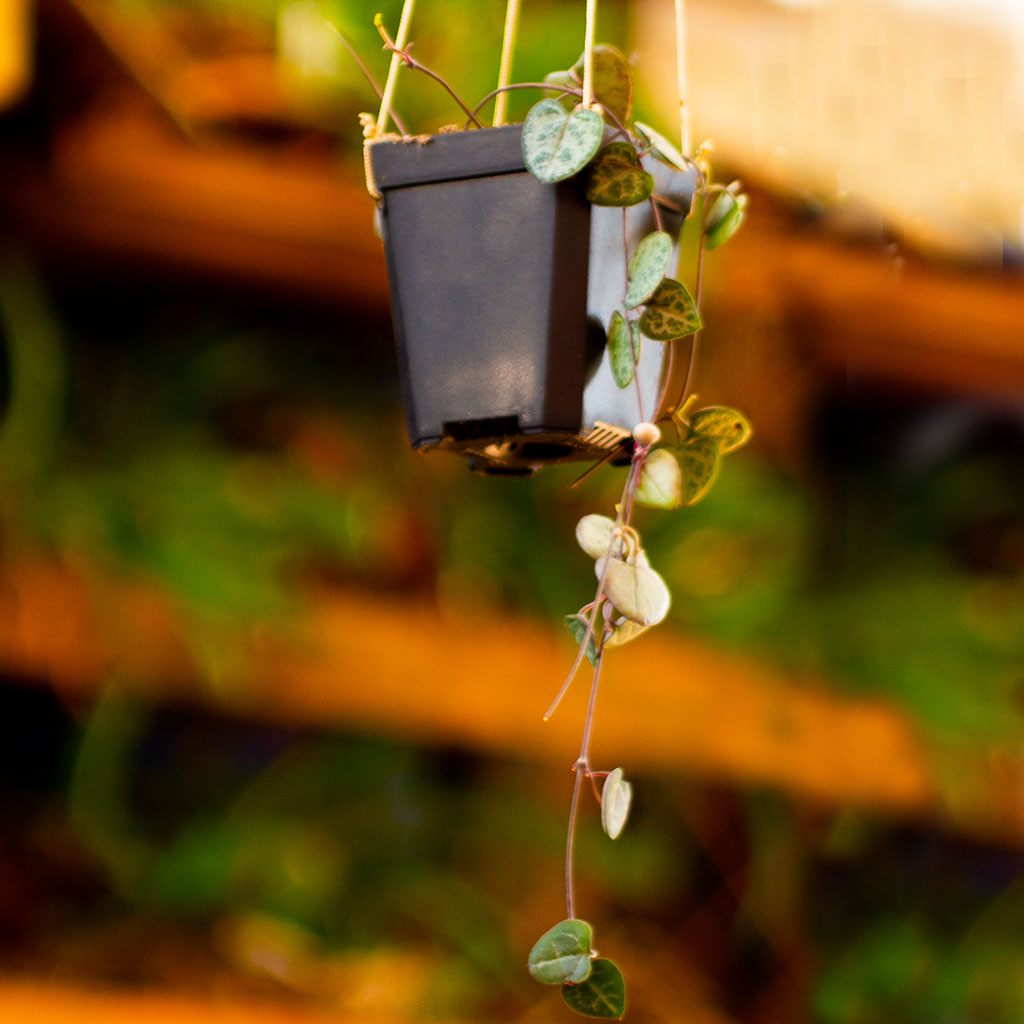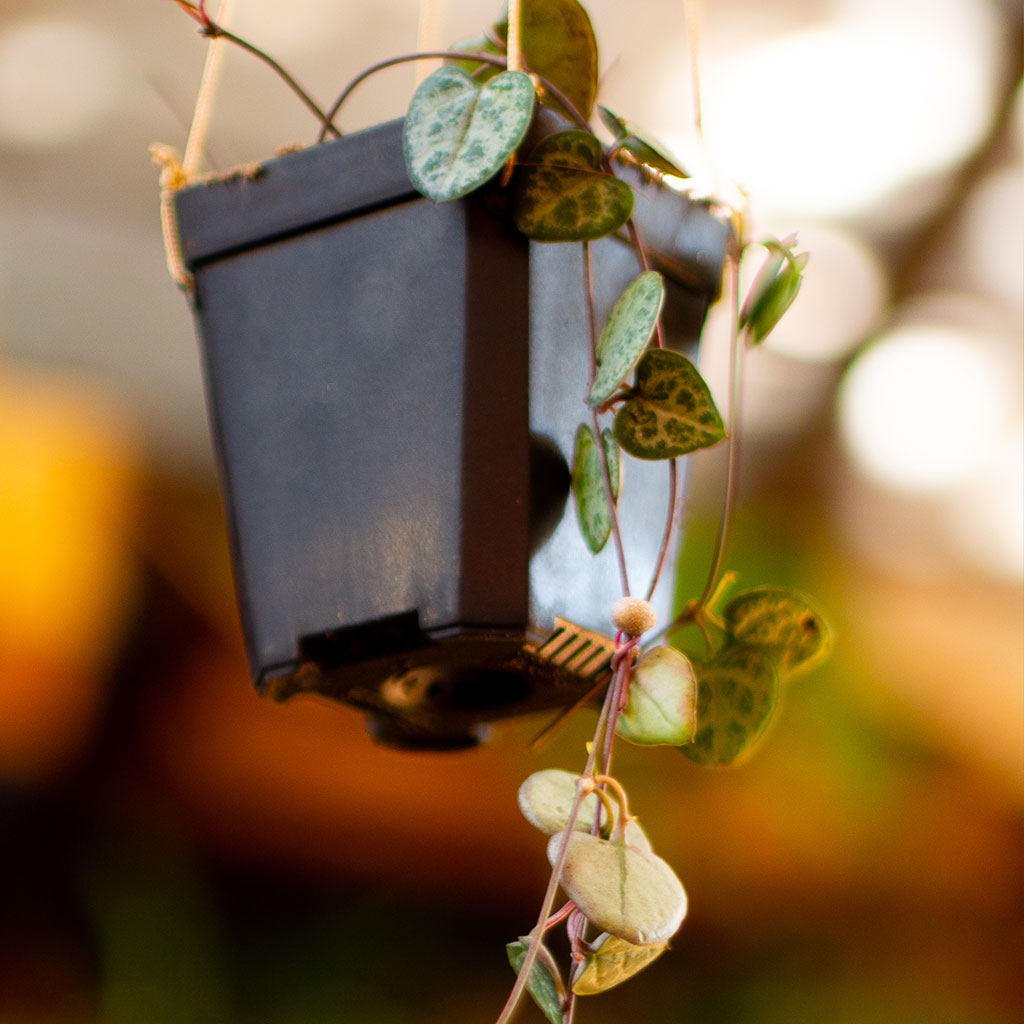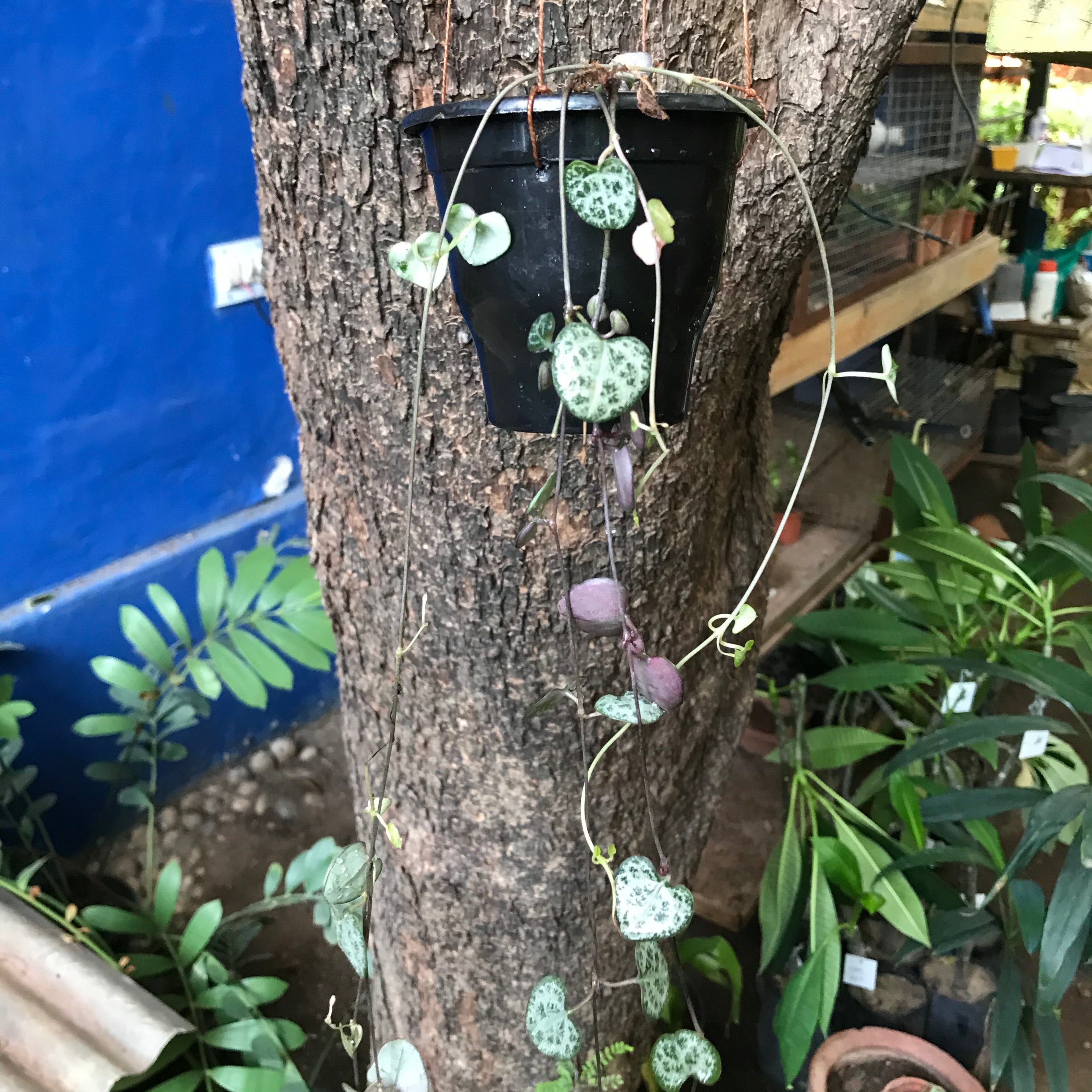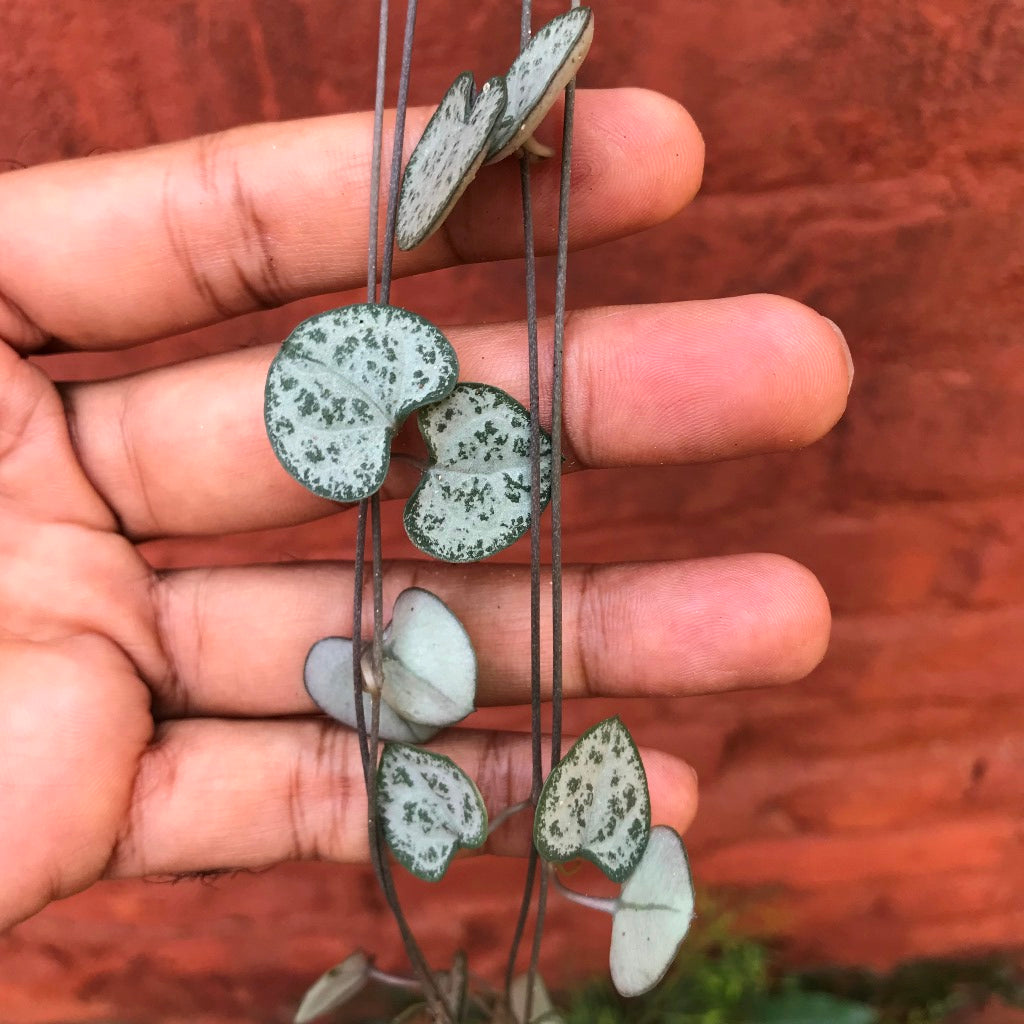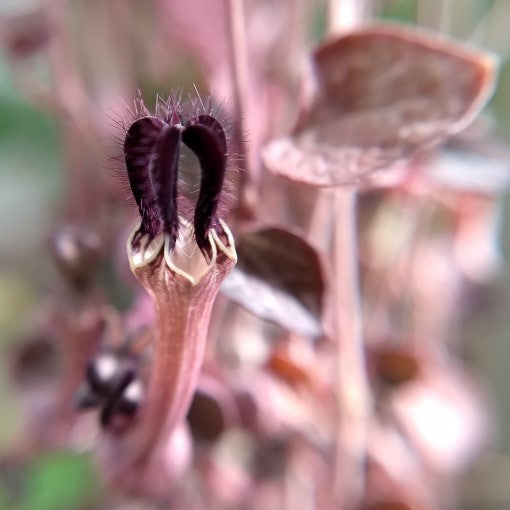Sweetheart Vine
Family
Asclepiadaceae
Native
Africa
Description
The String of Hearts (Ceropegia woodii) is a straggly evergreen climber with delicate heart-shaped foliage and slender vines can reach up to 12' long in its natural environment. The simple, opposite heart-shaped leaves are 1-2 cm wide and long. They are dark green marbled with silver on the upper surface and green to purple on the underside. Small tubers, which look somewhat like little potatoes, form at the nodes or leaf bases along the stems – another possibility for the “beads” that give rise to the common name of rosary vine.
Plants bloom primarily in the summer and fall, but flowers may appear sporadically at odd times throughout the year. The interesting and distinctive inch-long flowers have a bulbous base and tubular corolla in shades of white to pale magenta. The five purple petals are fused at the tips, forming a cage-like canopy so the blossoms resemble a small inverted pink vase. The waxy flowers are lined with small, downward pointing hairs that act to trap small flies that are attracted by the scent and enter the flowers.
Hummingbirds may be attracted to the flowers if the plants are outside during the summer.
Environment
Place your String of Hearts where it can receive plenty of bright indirect light. Small doses of direct sun are good, however too much direct sun can scorch the leaves. This plant is not suitable for lower light environments. A few feet removed from a southern or western-facing window is ideal, or directly in a northern or eastern-facing window will also suffice. In strong light the leaves will be darkly colored, with distinctive marbling; if not given enough light they will be a light green color.
This succulent plant requires excellent drainage and should be watered only when dry. It tolerates dry soil much better than soggy soil; it is easily killed by over watering. Use a freely-draining potting medium with plenty of coarse sand, perlite or other large-textured component to allow for adequate drainage. Allow the soil to dry between deep waterings. Fertilize infrequently (at most monthly when actively growing) with half strength houseplant fertilizer. Plants do best with a winter rest period. Reduce watering in winter and do not fertilize during this time. This houseplant does best when crowded, so repot only when necessary. Repotting is best done in spring before new growth starts.
Landscape Uses
The stringy, purplish stems are vining or trailing, making this best grown as a hanging plant. The stems can also be trained up a small trellis or topiary frame.

